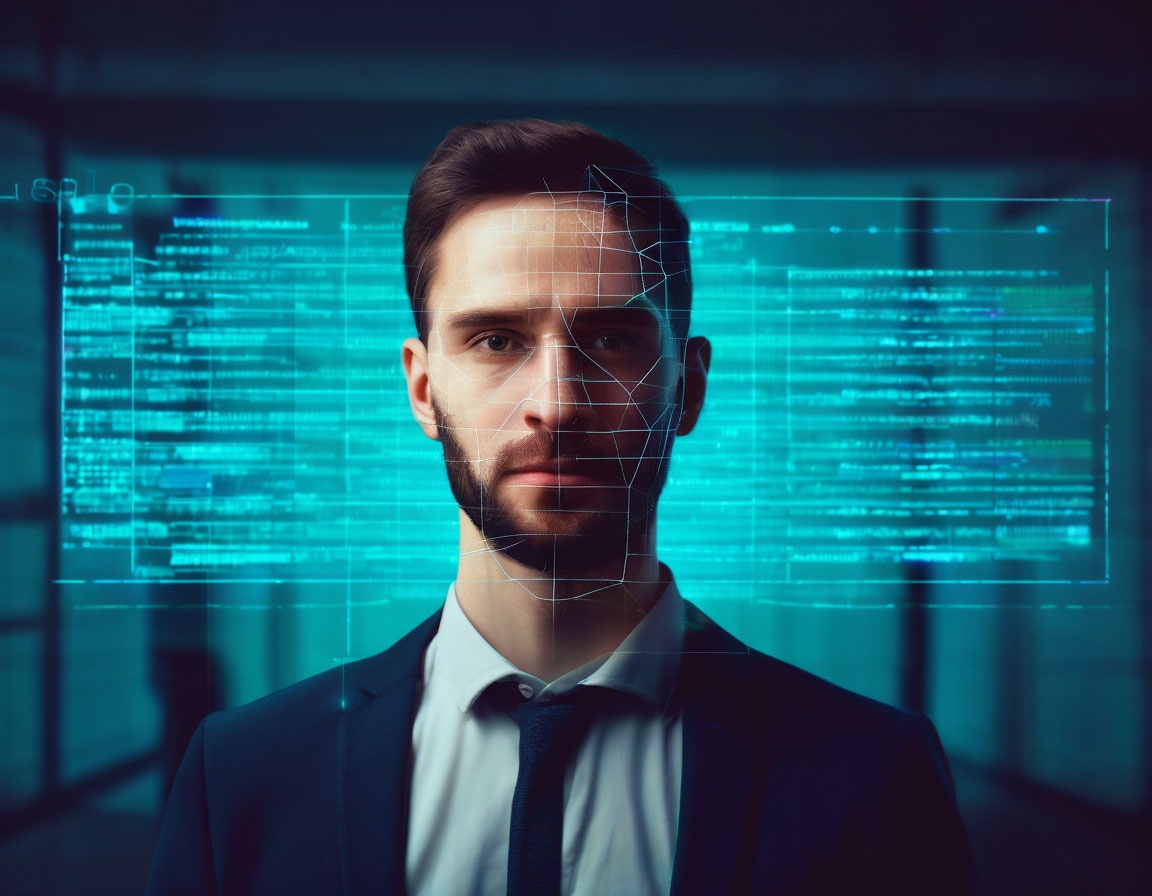
How to Reduce False Positives for Face Recognition
Face recognition technology has rapidly advanced in recent years, becoming a key tool in industries ranging from security to customer service. Its ability to identify individuals quickly and accurately makes it an appealing solution for a wide range of applications. However, like any technology, face recognition is not perfect. One of the most significant challenges it faces is the issue of false positives, where the system incorrectly identifies one person as another.
False positives can have serious implications, from security breaches to privacy violations, and can erode trust in the technology. Understanding why false positives occur and knowing how to effectively manage and reduce them is crucial for improving the reliability of face recognition systems. In this blog post, we’ll explore the common causes of false positives, the problems they create, and the best practices and techniques for handling them. By addressing these issues head-on, organizations can enhance the accuracy of their systems and ensure their face recognition technology performs as intended.
Common Causes of False Positives in Face Recognition

False positives in face recognition systems occur when the algorithm mistakenly identifies one person as another, even though they are not the same. These errors can arise from a variety of factors, and understanding the root causes is crucial to improving the accuracy and reliability of face recognition technology. Here are some of the most common contributors to false positives:
Similar Facial Features
One of the primary reasons for false positives is the similarity in facial features between individuals. People who share similar bone structures, facial proportions, or even hairstyles can sometimes confuse face recognition systems. For instance, twins or siblings often exhibit close resemblances that may mislead the algorithm. Even unrelated individuals from the same ethnic or demographic group might have facial traits that the system perceives as too alike, leading to incorrect matches.
Poor Image Quality
The accuracy of face recognition systems relies heavily on the quality of the images they analyze. Blurry or pixelated images can obscure key facial details, making it difficult for the algorithm to differentiate between people. Low-resolution images lack the fine distinctions in features like eye shape, skin texture, or the contour of the jawline, leading the system to guess inaccurately. Additionally, images taken from a distance or at awkward angles can further diminish the system’s ability to correctly identify individuals, resulting in more false positives.
Lighting Conditions
Lighting plays a significant role in the success of facial recognition. Poor or uneven lighting can create shadows or glare on a person's face, distorting key features and making it difficult for the system to generate accurate facial patterns. Overexposed or underexposed images—where the lighting is too bright or too dim—can obscure crucial details. For example, bright sunlight might wash out parts of the face, while dimly lit environments might hide significant contours, both of which can confuse the algorithm into producing a false positive.
Aging or Appearance Changes
Human faces are not static—they change over time due to aging or alterations in appearance. Weight fluctuations, haircuts, facial hair, makeup, and even expressions can significantly affect how someone is perceived by face recognition software. While more sophisticated systems attempt to account for these changes, significant transformations can still pose challenges. For example, a person who has grown a beard or drastically altered their hairstyle might be incorrectly matched with their previous, unbearded image, or with another person who resembles their new appearance.
Dataset Limitations and Bias
The effectiveness of face recognition systems is highly dependent on the datasets used to train them. If the training dataset lacks diversity—particularly in terms of age, ethnicity, or gender—the system might perform well on certain groups but poorly on others. This can lead to higher rates of false positives for underrepresented populations. For example, if a system is trained predominantly on lighter-skinned individuals, it may struggle to accurately identify darker-skinned individuals, leading to both false positives and negatives. Bias in training data is a significant concern, as it not only undermines the accuracy of the system but also raises ethical questions around fairness and equality.
Why False Positives Are a Problem in Face Recognition

False positives in face recognition systems can lead to significant challenges that go beyond technical inaccuracies. While these systems are designed to improve efficiency and security, a false positive—where someone is incorrectly identified as another person—can have wide-ranging consequences. Below, we explore the primary concerns that arise from these errors.
Security and Privacy Concerns
False positives pose a direct threat to security. In situations where face recognition is used for access control, such as in secure buildings, airports, or digital platforms, a false positive can allow unauthorized individuals to gain access to sensitive areas or information. For example, if the system incorrectly recognizes someone as a trusted user, it may grant them access to confidential data or restricted locations, putting both privacy and security at risk.
Moreover, false positives can lead to privacy violations. If someone is mistakenly identified as part of an investigation or flagged by law enforcement based on a false match, their personal and sensitive information could be exposed without cause. This not only undermines public trust in face recognition technology but also creates a significant privacy issue, as innocent individuals may be unfairly targeted or surveilled.
Impact on User Experience
Beyond security and privacy, false positives can severely impact the user experience. Imagine being denied entry to an event or locked out of your smartphone because the system mistakenly identifies someone else as you. These errors can cause frustration and inconvenience for users, leading to a lack of confidence in the technology.
In commercial settings, such as retail or entertainment venues, where face recognition is used to streamline customer service, false positives can disrupt the flow of operations. Incorrectly identifying customers may lead to mistaken service, or worse, denying service to someone altogether. In high-traffic environments, these errors can create bottlenecks, increasing wait times and diminishing customer satisfaction. Businesses that rely on these systems must ensure they work seamlessly, or they risk alienating customers.
Ethical and Legal Considerations
The ethical implications of false positives are profound, particularly when it comes to issues of fairness and bias. Face recognition technology has faced criticism for being less accurate when identifying people from certain demographic groups, especially those with darker skin tones, women, and older individuals. When false positives disproportionately affect certain groups, it raises concerns about discrimination and inequality.
These ethical issues also have legal ramifications. Laws and regulations are beginning to emerge that address the use of face recognition, particularly regarding its accuracy and the fairness of its application. In some jurisdictions, organizations may face penalties or legal action if their face recognition systems are found to be biased or if they result in wrongful identification. This makes it critical for businesses and institutions using face recognition to regularly audit their systems to ensure they meet legal standards and ethical expectations.
Techniques for Reducing False Positives in Face Recognition
Reducing false positives is essential for improving the accuracy and trustworthiness of face recognition systems. These errors can undermine the security and reliability of the technology, but there are several effective techniques that can help mitigate the risks. By improving image quality, refining algorithms, and incorporating additional layers of security, organizations can significantly enhance the performance of their face recognition systems.
Improving Image Quality and Preprocessing
One of the most straightforward ways to reduce false positives is to improve the quality of the images that the system processes. High-resolution, clear images allow face recognition algorithms to better distinguish between individuals by capturing finer facial details. Preprocessing techniques, such as noise reduction, contrast adjustment, and image sharpening, can enhance the clarity of an image before it’s analyzed.
In addition, ensuring that images are captured at consistent angles and under controlled lighting conditions can prevent errors caused by poor image quality. Automated tools can help standardize image quality across datasets, ensuring that the face recognition system works with optimal input. For live applications, implementing high-quality cameras with good resolution and frame rate can make a significant difference in reducing false positives.
Enhancing Algorithms and Model Training
Another critical step is improving the underlying algorithms used for face recognition. Modern machine learning and AI-based models can be trained on large and diverse datasets to better recognize and differentiate between subtle facial features. This process involves refining the algorithm’s ability to extract and analyze key facial landmarks such as eye distance, nose shape, and mouth position, making it more accurate in identifying individuals.
Continuous model training is crucial to adapting the system to real-world scenarios. By regularly updating the system with new data, including a wide variety of faces from different demographics, the system becomes more robust in distinguishing between individuals. This helps minimize the risk of false positives, particularly for people with similar facial features or underrepresented groups that the system may have previously struggled to identify accurately.

Using Multi-factor Authentication
Multi-factor authentication (MFA) adds an extra layer of security by combining face recognition with other verification methods, such as passwords, fingerprints, or one-time codes. If the system generates a false positive, the secondary method of authentication can help prevent unauthorized access.
For instance, when accessing sensitive data or entering secure premises, a face recognition match alone may not be sufficient. With MFA, even if someone is mistakenly identified, the additional authentication factor ensures that only the correct individual can proceed. This layered approach significantly reduces the risk of false positives leading to security breaches.
Incorporating Contextual Information
Another powerful technique to reduce false positives is incorporating contextual information during the face recognition process. Contextual factors, such as the time, location, or activity being performed, can help the system determine whether an identification is plausible. For example, if a person is identified by the system in two different locations at the same time, this would raise a red flag, indicating a possible error.
By leveraging metadata, such as location data, user behavior patterns, or historical interactions, the system can cross-reference the face recognition match with relevant contextual information to improve decision-making. This can be particularly useful in high-security environments, where false positives may have serious consequences.
Liveness Detection to Avoid Spoofs
Liveness detection is a critical feature for reducing false positives and preventing spoofing attacks. Spoofing occurs when an image or video of someone’s face is used to trick the face recognition system into making a false identification. Liveness detection ensures that the system can distinguish between a real, live person and a static image or recorded video.
Techniques like analyzing eye movement, skin texture, or subtle facial motions can help determine whether the face being scanned is live. Additionally, advanced methods like 3D face recognition or infrared scanning can further enhance the system’s ability to detect whether a person is physically present. By implementing liveness detection, organizations can significantly reduce the risk of both false positives and fraudulent access.
Best Practices for Monitoring and Handling False Positives in Face Recognition

To maintain the accuracy and effectiveness of face recognition systems, it’s crucial to actively monitor and manage false positives. Although errors can never be completely eliminated, following best practices can significantly reduce their occurrence and ensure that face recognition technology operates as securely and reliably as possible. Below are key strategies for monitoring and handling false positives.
Regular Testing and System Audits
Conducting regular testing and audits is essential for identifying and addressing potential weaknesses in face recognition systems. These evaluations should simulate real-world scenarios, checking the system’s performance across different conditions, including lighting variations, angles, and diverse user groups. By frequently running tests, developers can detect when the system produces a higher-than-expected rate of false positives and take corrective action.
System audits also involve reviewing logs and records of face recognition activities to track the frequency and patterns of false positives. This helps ensure that the system operates within acceptable accuracy thresholds. Additionally, periodic audits can help detect any algorithmic drift or performance degradation over time, allowing developers to recalibrate and optimize the system.
Implementing Human Review for Critical Cases
While automation is one of the strengths of face recognition systems, it’s important to incorporate human oversight for high-stakes or critical use cases. When the system encounters uncertain matches or cases where the potential consequences of a false positive are severe—such as in law enforcement or airport security—a human review process should be in place.
In this approach, flagged cases or questionable matches are sent to a trained human operator who can make a final decision, using contextual knowledge and judgment that the system may lack. Human review adds an extra layer of assurance, reducing the risk of harmful false positives in critical situations, where the stakes are too high to rely solely on automation.
Threshold Adjustments and Customization
Threshold settings play a significant role in the balance between accuracy and false positives. Every face recognition system operates on a matching score threshold, where it decides whether a match is considered valid based on a numerical confidence score. Adjusting this threshold can help reduce false positives, but there’s often a trade-off: lowering the threshold might reduce false positives, but it could also increase false negatives, where valid matches are missed.
The key is to customize thresholds based on the specific context in which the system is being used. For example, a lower threshold might be acceptable in low-risk settings like customer service, while higher thresholds should be applied in security-sensitive applications. Organizations should regularly review and adjust these thresholds to ensure they are optimized for both security and user experience, depending on the situation.
Data Feedback Loops for Continuous Improvement
Face recognition systems thrive on data, and one of the most effective ways to handle false positives is by creating a feedback loop to continuously improve the algorithm. By collecting and analyzing data on false positives—especially recurring patterns—the system can be fine-tuned to better distinguish between individuals.
This feedback process involves labeling false positives and feeding them back into the machine learning model during retraining. Over time, the system "learns" from its mistakes, making it more accurate and reducing the likelihood of repeating the same errors. This iterative process is key to maintaining a high-performance face recognition system that adapts to new data and becomes increasingly reliable.
Conclusion
False positives in face recognition systems present significant challenges, from security vulnerabilities to negative user experiences. However, by understanding the common causes—such as similar facial features, poor image quality, and bias in datasets—organizations can take meaningful steps to reduce these errors. Techniques like improving image quality, refining algorithms, and incorporating multi-factor authentication add valuable layers of protection. Additionally, best practices such as regular testing, human review, and continuous data feedback loops help maintain the system’s accuracy over time.
As face recognition technology continues to evolve, it is essential to approach false positives with a proactive mindset. Addressing these issues not only enhances system performance but also builds user trust and ensures ethical, fair applications. By carefully monitoring and managing false positives, organizations can fully harness the potential of face recognition while minimizing the risks that come with it.
